The Motorola Atrix 4G Preview
by Anand Lal Shimpi on February 13, 2011 3:18 AM ESTThe Webtop App: Atrix as a PC
When you go to AT&T to buy your Atrix 4G you have the option, at the time of purchase, to add a laptop dock for $299 bringing your total up to $499 with a two year contract. Included within that contract you agree to a tethering plan ($20 per month) and AT&T's DataPro plan ($25 per month). Both of these are required in order to get the laptop dock for effectively $299. The laptop dock is a 11.6" notebook shell with no motherboard. Your Atrix 4G will serve that function instead.
If you choose to buy the laptop dock after the fact, you pay a full $499. If $299 was difficult to swallow, $499 is nearly impossible to justify unless you really, really love your Atrix 4G.
For $189.99 Motorola will sell you its HD Multimedia Dock along with a Motorola Bluetooth keyboard and mouse and remote control. This dock is a lot simpler, it looks like something you'd plug your iPod into...just the wrong way.
Unlike the Laptop Dock, the HD Multimedia Dock doesn't have any internal battery. Instead you get a separate AC adapter with a much-too-thin connector that will charge your Atrix and power the dock at the same time.
Along the back of the dock you get a micro HDMI output, 1/8" stereo jack and three USB ports.
Motorola sent me the entire multimedia dock bundle, complete with Motorola Bluetooth keyboard and mouse (the package is called the Entertainment Access Kit for Atrix 4G). Supply your own HDMI display and you can turn the Atrix 4G into as little as an entertainment center, or as much as a very limited desktop PC.
I didn't have much time with the setup (I think carrying a monitor would put me over my carry on weight limit) so I focused mostly on using the Atrix as a computing device. One obvious limitation to the entertainment center aspect is the lack of popular container support. Unless you have smartphone specific video content, you'll probably have to transcode anything you move over from your PC or Mac.
The minute you dock the Atrix 4G you get a popup asking you what you want to do. This is similar to the type of message you get when you connect an Android phone to your PC over USB, but the message doesn't hide in the notification shade - it appears front and center.
One of the options is to launch the webtop app. Motorola's webtop application appears to be a build of Linux that can run alongside Android.
When you launch the webtop app you get a UI with two desktops. In a window you get the mobile view, which is a virtual Android screen that works just like your phone. You can dial numbers, run apps, browse your email and do anything you could do if you were using your smartphone. Instead of controlling actions via the Atrix's touchscreen you're using a mouse (although you can use the Atrix's touchscreen as a docked trackpad/virtual keyboard if you'd like).
The second desktop is the webtop app itself. Along the bottom of the app is an OS X like dock, giving you access to frequently used functions. Anything to the left of the vertical divide are things that run in mobile view, and everything to the right runs in the webtop app. The biggest feature here is Firefox.
The webtop app comes with a fully functional version of Firefox (3.6.13) for Ubuntu. Click the Firefox icon and you'll begin your browsing session.
Internet connectivity is provided by the phone of course. Indicators located in the upper right of the screen tell you WiFi, cellular and Bluetooth status. Motorola has skinned all of these functions to look and feel like they would on a notebook. Click the WiFi icon and you'll get a list of available networks just like you would under OS X, Chrome OS or Windows 7. You can even disable wireless connections here without ever opening the settings pane in mobile view. Printing is also possible if you've got a shared printer on your network. It's all done very well.
The Firefox browsing experience is equally impressive, at first. Your favorite keyboard shortcuts work (Ctrl + L moves your cursor up to the URL bar, although sometimes the keyboard shortcut won't work without you clicking around in the browser to remind it of its focus). All of your websites load and feel right at home on a large display. There's even Flash support, so sites like YouTube just work without any tinkering.
Performance, so long as you are only dealing with basic content pages, is reasonable. It feels similar to what you get on the phone itself, which thanks to the Cortex A9s isn't that far off an Atom. I'll have more scientific measurements in the full review.
Where the Firefox/PC experience breaks down is the minute you ask for more than a simple browsing experience. Typing in Google Docs is laggy. With a couple of browser tabs open I found that I could type three sentences before they'd appear in my document.
YouTube playback works, however anything above 360p begins to drop frames. While 480p is playable, anything higher is basically impossible to watch. Motorola preloads Flash 10.1.120.10 with hardware acceleration in its webtop Linux however there doesn't appear to be any way to force an update. You'll note that this is the same version of Flash that the Optimus 2X was running, although I'm not convinced that GPU acceleration is fully enabled under Motorola's webtop Linux. Monitoring CPU usage in Android shows that playing a YouTube video in webtop Linux eats up between 50 - 80% of the two ARM Cortex A9s. Hilariously enough, HTML5 video is unwatchable in Firefox on the Atrix 4G.
Light usage isn't bad, but open too many tabs and you quickly get a worse-than-netbook browsing experience on the Atrix 4G.
You can Alt+Tab to switch between windows when you're in webtop Linux however even bringing up the task switcher is incredibly laggy at times.
It's clear that the webtop app is Motorola's main reason for including 1GB of memory on the Atrix. The Android VM typically eats up around 40% of available memory, with Firefox another 16% during light usage. While Motorola could've gotten by with only 768MB, I believe the 1GB is probably perfect for the Atrix if you're going to be using it in webtop mode.
Despite the performance issues I'd say that the HD Multimedia Dock + webtop mode is probably one of the coolest innovations I've seen in the smartphone industry. If you want to know why we need faster SoCs, this is why. The efficiency of Android and iOS is amazing on the hardware we have today, but tax them more and you quickly get the impression that even Windows running on a netbook is faster. We'll need the Cortex A15, Project Denver and new architectures to enable usage models like what Motorola is going after with the Atrix 4G.
I'm not sure if I'd personally buy the Laptop Dock, but the HD Multimedia Dock is pretty interesting if you don't have a good PC and just want to do some big screen web browsing. Power users will be frustrated by the experience but I have to say this is the start of something great.


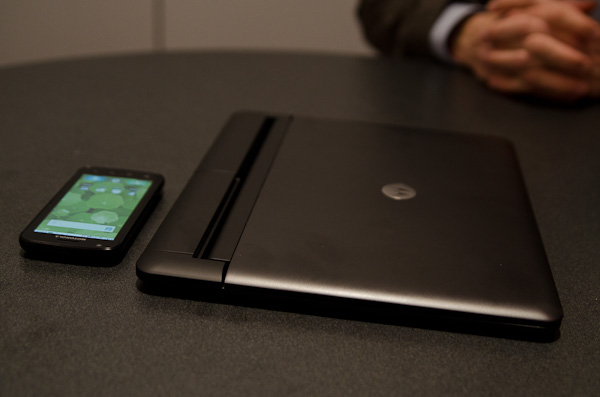
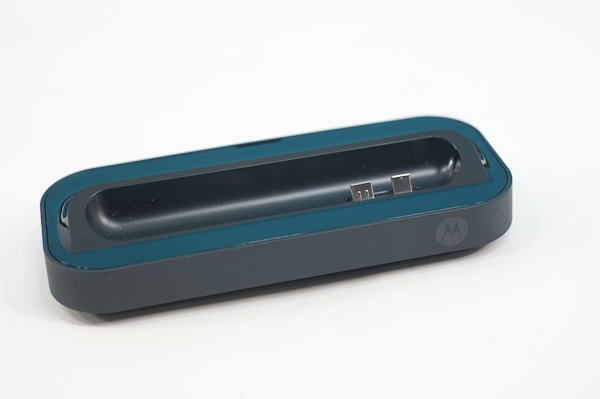
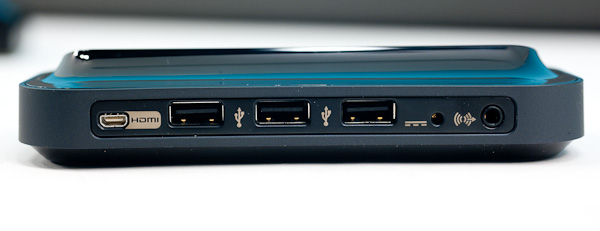
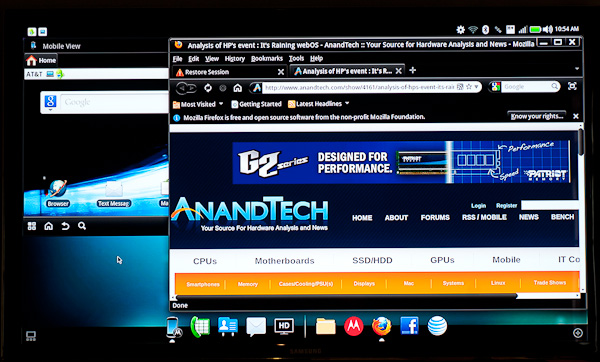
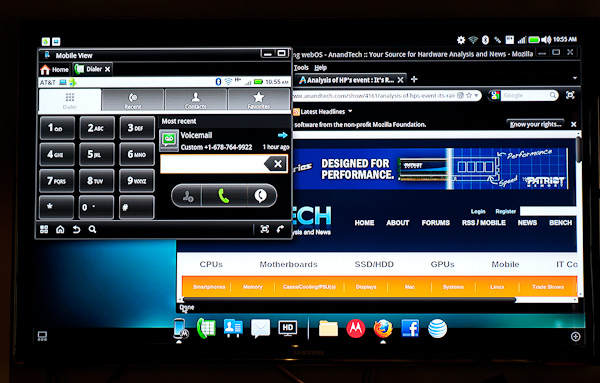








41 Comments
View All Comments
evan919 - Sunday, February 13, 2011 - link
Hi Anand,The reason the Atrix 4G (and consequently the Inspire 4G) suffer from UMTS-sh upload speeds is because AT&T requests the handset manufacturer to disable HSUPA. The same thing occured with every smartphone besides the iPhone 4 on AT&Ts network. I have a Captivate that has HSUPA enabled by flashing the modem firmware with an HSUPA enabled firmware. Just a little insight. I'm enjoying the review.
http://emuneee.com/2011/02/is-att-disabling-hsupa-...
shabby - Sunday, February 13, 2011 - link
Those are just pathetic speeds, 4g my ass att. Im getting 6mbps down and 3mbps up on rogers 3g network with my captivate using bells unlocked hspa modem.FrozenAsset - Sunday, February 13, 2011 - link
Unless I'm missing something, why waste money on a dock? Can you bypass a dock completely?Can you not just provide your own keyboard / mouse and attach by USB hub or connect by Bluetooth?
It comes with it's own HDMI cable, cant you use that to connect to an HDMI monitor or TV and browse the web at the same time without also paying for tethering?
The dock I have for my Panasonic TV / iPod is a dumb dock, no chip, no software just a place to sit it and connect to the TV. Why would anyone spend that kind of money on something like that?
Mumrik - Sunday, February 13, 2011 - link
It's up to you whether you'll take this as a compliment (personally) or an insult (to the site), but Anand, you are by far the best writer at Anandtech. I'm far more likely to read every word of an article if you wrote it, and as I started to read this one I was immediately able to tell that you were the author.SpartanJet - Sunday, February 13, 2011 - link
On the "The qHD Screen: A Pentile LCD?" you have a thumbnail of both the iPhone LCD and the Atrix LCD unfortunately when you click on the thumbnail they both link to the same picture.I'm really interested in this phone but the screen seems like I'd fall into the "it would bug me" group. I pre-ordered this phone now looking at that screen I'm starting to have my doubts. I think the screens are the 2nd most important feature on these smartphones.
JCheng - Sunday, February 13, 2011 - link
What's the first most important feature?notposting - Sunday, February 13, 2011 - link
Hey Anand,I thought I remember seeing that the power button doubles as a fingerprint scanner on the Atrix but I didn't see you mention it.
Interesting perspective on how things work in the technological fields...this may be the first of it's kind but probably won't be the one that really hits that balance of price and performance just yet...nice demonstration unit though.
Also agree with the other poster...very well written article. :)
PubicTheHare - Sunday, February 13, 2011 - link
Anand,I didn't see a reference to the bootloader. I know Moto likes to lock it up (Droid X, Droid 2). Any idea if they did it with the Atrix?
If so, we can assume they will do it with the Bionic (please preview this one, too!).
Have fun at MWC!
sid1712 - Monday, February 14, 2011 - link
Anand, you've written that the OptimuxS2X has 4" Super AMOLED display instead of the IPS LCD that it has.Also, it would be great if you would give your opinion on the call quality via the earpiece and the loudspeaker quality. Do the dual microphones improve the call quality significantly ?
Cheers
TareX - Tuesday, February 15, 2011 - link
I'm extremely disappointed with the PenTile LCD.... even Samsung fixed that with the new SAMOLED PLUS displays... I knew there had to be catch with the Atrix 4G.I'm even more disappointed with the contrast and brightness... isn't anything competitive with Apple's IPS? I'm starting to believe Apple really does make the best hardware decisions.
I am disappointed.... I like Motoblur, actually. I would take it over anything LG makes. Sigh.